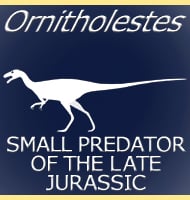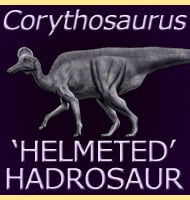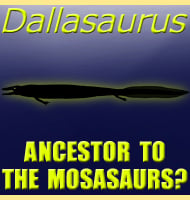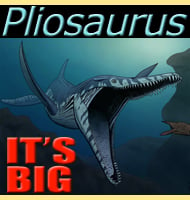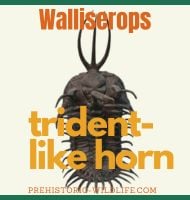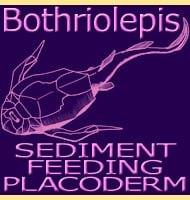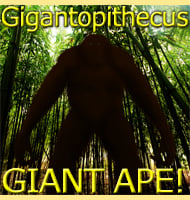In Depth
Despite its diminutive size Compsognathus is one of the dinosaurs that are best known to science. Not only was the skeleton well persevered but the remains of its last meal, a small lizard named Bavarisaurus were also found inside the specimen proving without doubt that Compsognathus was a carnivore. At the time of its discovery Compsognathus was the smallest dinosaur known to the still new science of palaeontology resulting in the frequent comparison of Compsognathus being the size of a chicken (although one meter long about half that length is tail). However Compsognathus no longer carries the title of smallest dinosaur as the discovery of maniraptorian dinosaurs like Microraptor has shown that dinosaurs were capable of being very small, and further discoveries are likely to reduce this size even further.
The holotype specimen of Compsognathus was of a juvenile individual meaning that the full size of Compsognathus was not realised until the discovery of a French specimen in 1971. Initially hailed as a second species, further study revealed it to be the adult form of the juvenile German holotype. This realisation increased the known length of Compsognathus from eighty-nine centimetres to one hundred and twenty-five centimetres.
Most early reconstructions of Compsognathus show it to have two fingers similar to Tyrannosaurus however these are based upon a product of incomplete preservation. Compsognathus did indeed have a third finger like many other theropod dinosaurs, something that is becoming increasingly well-known with accurate modern reconstructions showing Compsognathus to have three fingers.
The main prey of Compsognathus appears to have been small lizards as evidenced by the remains of fossilised prey in both specimens. These lizards are found in a relatively complete state suggesting that they were not pulled apart but swallowed whole. Invertebrates like insects may have also formed a part its diet, especially in smaller juveniles that were not yet large enough to swallow whole lizards. Also, well preserved fossils of the related Sinosauropteryx show that small mammals may also have formed a part of the diet of Compsognathus.
Compsognathus was well adapted to catching small and presumably fast moving prey like lizards that would have scurried into the undergrowth as soon as they were seen. The long legs that featured a proportionately small humerus when compared to the lower legs are a hall mark of a fast runner. The feet of Compsognathus were also digitigrade meaning that Compsognathus essentially balanced on its toes rather than the flat of its foot. This also means that the main foot bones served to extend the length of the leg and increase the striding length even further. A fast running animal would also explain the very long tail of Compsognathus. Held erect off the ground, the tail would have been a versatile balancing aid when chasing after prey.
The large eyes of Compsognathus suggest that it was a visually orientated predator that may have reacted more to the movement of prey. This would have required fast reflexes to stop prey from escaping, but aside from being a fast runner, the long neck of Compsognathus meant that it could quickly move its head to the sides without moving its body. Compsognathus would also be able to work its head into the undergrowth and pull out prey that was using it for cover.
Compsognathus has a long standing association with Archaeopteryx due to their shared presence in the same deposit, as well as stark similarities which include a specimen that was thought to belong to Compsognathus being revealed to be an Archaeopteryx without the feather preservation. For a long time the question of ‘if Compsognathus had feathers?’ has been asked by many. Chinese relatives of Compsognathus such as Sinocalliopteryx and Sinosauropteryx show a covering of primitive feathers, different from those seen in modern birds but enough to provide insulation as well as possibly serve a display purpose. The discovery of Juravenator, also from Germany was initially hailed as a relative to Compsognathus that seemed to confirm a lack of protofeathers as evidenced by a skin impression. However a review of Juravenator by Xu Xing in 2010 revealed a very light covering of protofeathers in the skin impression that are visible under ultraviolet light. These pieces of evidence combine to the suggestion that it is at least possible that Compsognathus had primitive feathers, something which might one day be confirmed by directly attributable fossil evidence.
Eggs that are ten millimetres long were once thought to have possibly belonged to Compsognathus on the basis that they were found in close proximity to Compsognathus remains. However these are no longer thought to have belonged to Compsognathus on the principals that they were not found inside Compsognathus, and that the related and similarly sized Sinosauropteryx had eggs preserved in its oviducts that were much larger at thirty-six by twenty-six millimetres long.
Further Reading
– Neue Beitr�ge zur Kenntnis der urweltlichen Fauna des lithographischen Schiefers; V. Compsognathus longipes Wagner. – Abhandlungen der Bayerischen Akademie der Wissenschaften 9: 30–38. – A. Wagner – 1861. – Vorlegung der Metatarsen eines Compsognathus-�hnlichen Reptils von Solenhofen. – Sitzungsberichte der Gesellschaft Naturforschender Freunde zu Berlin, Jahrgang 1884, pp. 179-180. – W. B. Dames – 1884. – Compsognathus longipes Wagner. – Neues Jahrbuch f�r Mineralogie, Geologie and Palaeontologie 1: 157–160. – F. von Huene – 1901. – Eine neue Rekonstruktion von Compsognathus longipes. – Zentralblatt f�r Mineralogie, Geologie und Palaeontologie Jahrgang 1925, Abteilung B(5): 157-160 – F. R. von Huene – 1925. – Die Z�hne des Compsognathus und Bemerkungen �ber das Gebiss der Theropoda. – Zentralblatt f�r Mineralalogie, Geologie und Pal�ontologie, Abteilung B, Jahrgang 1934: 74–85 – E. Stromer – 1934. – Compsognathus corallestris, une nouvelle esp�ce de dinosaurien th�ropode du Portlandien de Canjuers (Sud-Est de la France). – Annales du Mus�um d’Histoire Naturelle de Nice 1: 9–40. – A. Bidar, L. Demay & G. Thomel – 1972. – The osteology of Compsognathus longipes. – Zitteliana 4: 73–118. – J. H. Ostrom – 1978. – Neue Gedanken �ber Compsognathus longipes Wagner und dessen Fundort. – In: Erwin Rutte-Festschrift, Weitenburger Akademie, pp 157–162 – M. M�user – 1983. – Description du Compsognathus (Saurischia, Theropoda) de Canjuers (Jurassique sup�rieur du Sud-est de la France), position phylog�n�tique, relation avec Archaeopteryx et implications sur l’origine th�ropodienne des oiseaux. – Ph.D. dissertation, Mus�um National d’Histoire Naturelle, Paris. – J. G. Michard – 1991. – Small theropod teeth from the Upper Jurassic coal mine of Guimarota (Portugal). – Palaontologische Zeitschrift 72: 179–189. – J. Zinke – 1998. – A reconsideration of Compsognathus from the Upper Tithonian of Canjuers, southeastern France. – Journal of Vertebrate Paleontology 26 (4): 879–896. – K. Peyer – 2006. – Re-evaluating Moodie’s Opisthotonic-Posture Hypothesis in fossil vertebrates. Part I: Reptiles – The taphonomy of the bipedal dinosaurs Compsognathus longipes and Juravenator starki from the Solnhofen Archipelago (Jurassic, Germany). – Palaeobiodiversity and Palaeoenvironments, 92(1): 119-168. – A. G. Reisdorf & M. Wuttke – 2012.- A new lizard (Squamata) was the last meal of Compsognathus (Theropoda: Dinosauria) and is a holotype in a holotype. – Zoological Journal of the Linnean Society. Online edition (3): 584–634. – Jack L. Conrad – 2017.


